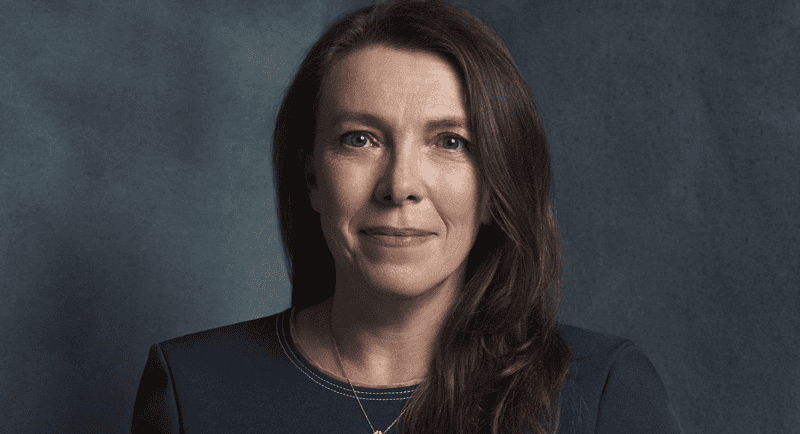News Corp Australia’s national daily The Australian has been in celebration mode in 2024. The news brand’s jubilation peaks on July 15 which marks 60 years to the day since the newspaper was launched by Rupert Murdoch. It is an anniversary worth celebrating given the bumpy road news publishers have been travelling so far this century.
News Corp has found a way for its major news brands to continue in print alongside a growing digital audience. Subscription revenues have replaced newsstand revenue and are a significant part of a business model that is experiencing declining ad revenues.
Leading The Australian is editor-in-chief Michelle Gunn. She has been the editor of the brand since May 2020 and took on the role of editor-in-chief in January last year. Her talents are also put to use with the additional title of editor-in-chief of the Prestige titles that sit alongside The Australian – Wish, The List, Travel + Luxury, The Weekend Australian Magazine and the Conde Nast International titles – Vogue Australia, Vogue Living and GQ Australia.
In that role, Gunn works alongside Edwina McCann, editorial director and publisher, Prestige and Conde Nast Titles.
Earlier in her career, Gunn carved out a significant presence at The Australian during eight years as the editor of The Weekend Australian.
“Back then I thought I was a very, very busy woman,” Gunn told Mediaweek on the eve of special anniversary editions of the newspaper. “Now, I’m not so sure. Since those days, I became editor for two or three years, looking after both The Weekend Australian and The Australian, and now editor-in-chief for the last 18 months.”
The art of delegation
With her role guiding the masthead, plus the wider Prestige titles, has Gunn learnt the art of delegation, or does she still strive to be hands-on as much as possible?
“The answer to that is kind of yes and yes. Let me explain. Yes, I have had to learn the art of delegation.
“If you ask any newspaper editor, that is something that is very, very difficult to do. The reason that we are newspaper editors is that we live, sleep and breathe news yarns. It’s very hard to get back from that, particularly after more than 30 years at the coalface of journalism. So, yes, I have had to learn to delegate. That’s made somewhat more easier for me having appointed Kelvin Healey as my editor.
“He is tremendous and that’s made stepping back a little bit easier.
“However, why I said yes to the second part of your question is, even as editor-in-chief, you can’t step back too far. This masthead is my responsibility, and that is digital platforms, that’s off-platform, that’s print, it’s all of it. You have to keep your hands on the controls, and you want to, because that’s the whole point of it, right?”
See also: The Australian unveils new leadership team led by Nicholas Gray and Michelle Gunn

Lachlan Murdoch photographed by Nick Cubbin for the cover of The Australian’s 60th anniversary magazine. The special edition was edited by Petra Rees. Cubbin also took portraits of many of the other 60 people featured in the magazine.
Celebrating 60 years of journalism
When it came to the strategy of how best to cover this milestone, Gunn said, “We wanted to celebrate our journalism over the six decades. But we also wanted to very much be in the here and now and to look forward.
“We were keen to showcase our storytelling and point to the future. When compared to our 50th celebration, this was much more digitally oriented with six weeks of coverage. There was a page in print every day, and of course, we’ve got a beautiful magazine published on Saturday, a glossy 104-page collector’s edition.
“It’s telling the stories of 60 people of influence. The magazine also has essays in that edition that are here and now. They are very much pointing out the values of the paper, and I thought that was important.
“I felt this celebration of the six decades should celebrate who and what we are now, and the strong future that we have, as much as looking back.”
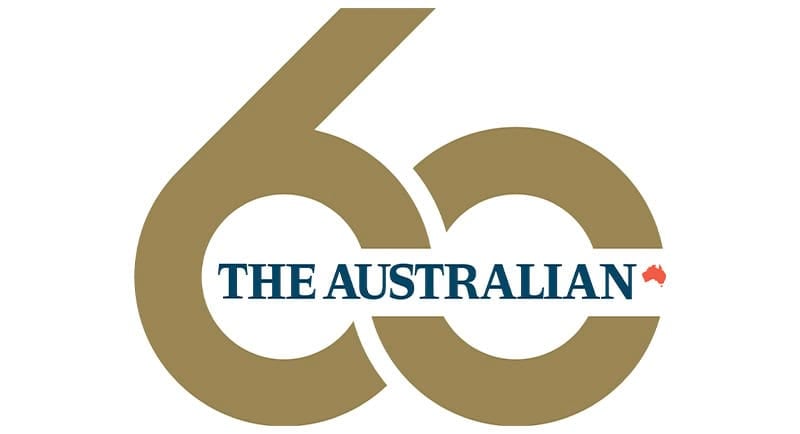
What makes the whole exercise even more worthwhile is that there has been some commercial upside to the celebration too. “It’s been a tremendous success commercially,” confirmed Gunn. “We have a number of partners or companies who’ve supported the birthday, including Qantas, Harvey Norman, Hancock Prospecting, CommBank, Ampol, and Woodside. Many of those companies have been long-term advertisers in The Australian.
“Some of them appeared in print in the very first editions of the paper in 1964. They have been a good fit, they have shared the journey and it’s been great working alongside them on this celebration coverage.”
Political perspectives at The Australian
Some readers relish what they might see as a conservative outlook at the paper. Gunn is not so sure that’s the best description.
“I don’t know that it’s helpful putting labels on those values, but I’ll explain them in terms of what they are.
“The paper has a set of values that have remained fairly consistent. Having spent more than 30 years on this newspaper, I feel like I’ve marinated in those values for a long time. [Laughs]
“What The Australian stands for is freedom of expression, freedom of speech.
“We believe our editorials reflect a kind of worldview that’s pretty optimistic. We want a confident nation that’s looking to prosperity, social cohesion. All of those factors define who we are.
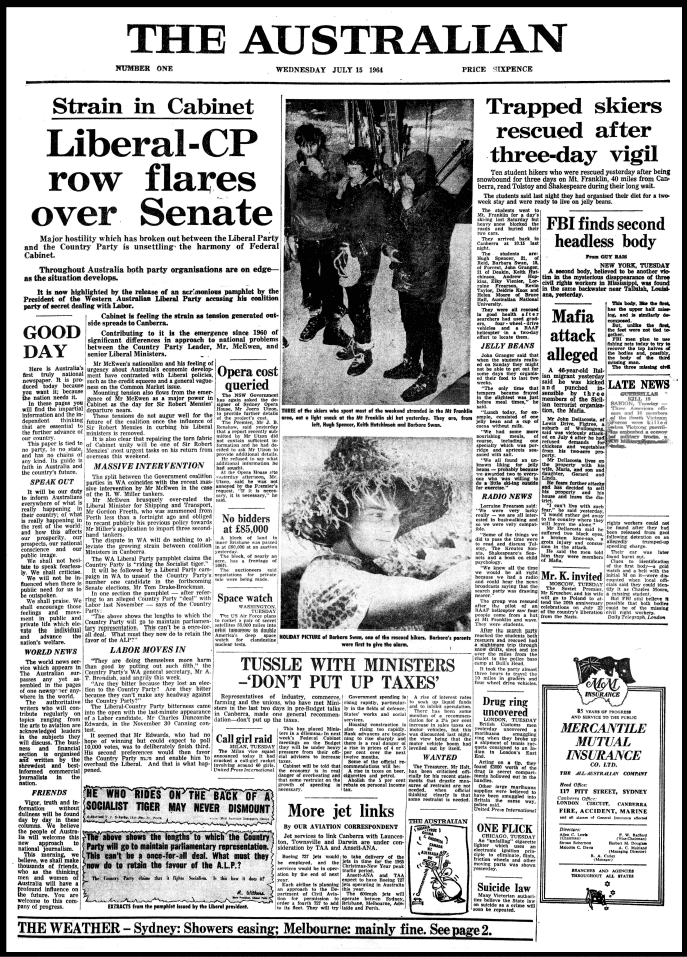
The Australian – page one, number one – July 15, 1964
“One way to answer that is to look at our new brand campaign. It’s labelled ‘Welcome to the contest of ideas’. The Australian has always been true to its values. I don’t think those values have changed much since 1964. If you look at our editorial that was published on the first day of the first edition. It really sets out what Rupert Murdoch, as founder of the broadsheet sought to achieve.
“Our masthead aims to have fairly straight news reporting. This is something [a former editor-in-chief] Chris Mitchell said. It’s something that all editors-in-chief that I’ve worked with have been devoted to.”
See also: The Australian and Today the Brave unveil brand platform, ‘Welcome to the Contest of Ideas’
Contest of Ideas
“Our commentary and analysis are an important part of who and what we are. Have a look at our reporting around The Voice referendum debate. Anyone looking at that coverage would come to the conclusion that The Australian represented the breadth and depth and diversity of views in that referendum debate better than anybody.”
Gunn explained how The Voice debate was an example of showcasing opposing viewpoints. She noted that Chris Kenny and Jacinta Price were on opposite sides of that debate within the newspaper.
“I was very, very determined to surface the views of the Yes case and the views of the No case and to have very vigorous contest of ideas. What I’d say to you is our readers expect that of us. They like to be challenged.
“That’s an important thing that distinguishes mainstream media from social media platforms. We’ve spoken at length about the ways in which people can be safe in their bubbles or retreat to parts of the internet where everybody around them reflects their views.
“I’m really excited about our new brand campaign, Welcome to the Contest of Ideas. It legitimately and genuinely reflects what The Australian is today and what we seek to do when it comes to the intersection of politics, public policy and business.”
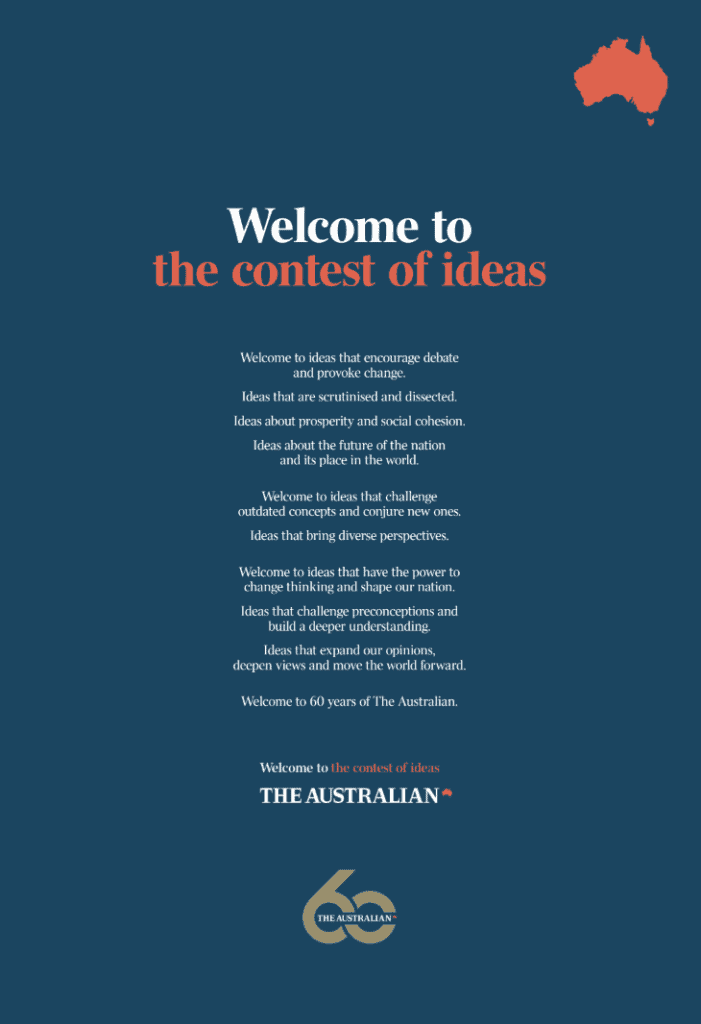
Phillip Adams enters a seventh decade at The Australian
The editor-in-chief also noted the freedom its writers have within the broadsheet pages.
“Phillip Adams has written a piece for us this weekend where he refers to the fact that he’s been writing on and off for The Australian since the 1960s.
“He says in that piece, ‘I have not ever been censored during those decades at The Australian.’ He’s been there for all of those decades.”
Gunn also singled out Nikki Gemmell’s columns. “You know, a lot of our readers take issue with Nikki. She challenges them when it comes to her political or world view. But it’s kind of great.”
While Gunn mentioned Phillip Adams, we checked if he’s continuing with News Corp after having retired from Radio National.
There’s good news. Gunn said: “He will be there for as long as we can have him, as long as he’s happy to be there. He’s showing no signs of wanting to give up the column. And I’m really pleased about that.”
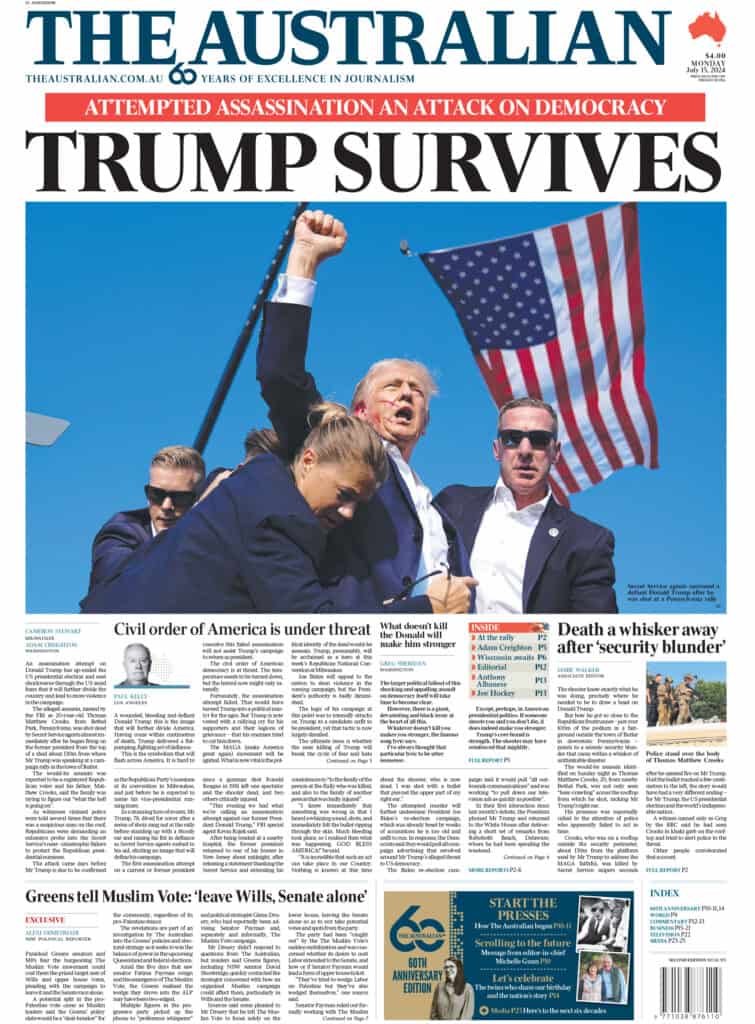
Page one The Australian at 60. The assassination attempt on the former US president dominates the news
The changing face of The Australian
In the past two decades there were many forecasts that printed newspapers could not possibly survive. In particular there was speculation that “quality dailies” in particular – The Australian, The Sydney Morning Herald and The Age – could not possibly sustain printing six days a week.
They found a way though. But how might The Australian look at the end of the next decade?
While Gunn stopped short of putting a timeline on the survival of print, she did tell Mediaweek: “There’s no doubt that the future is digital. And we’re working very hard on our digital product.
“Print remains very important. We’re now the only truly national printed product. The Australian Financial Review has stopped distributing a printed product in Western Australia.
“It’s very difficult to look at a decade and confidently say which publishers will still be in print and what their distributions will be. I would hope that we are still in print as well as digital.
“What I do know is that we have an audience of more than four million now, monthly. That’s a bigger audience than ever before. We have more than 300,000 subscribers which is a healthy place to be.”
Engaging with News Corp management
With Rupert Murdoch stepping back a little with the newish role of News Corp chairman emeritus, there has been a significant changing of the guard within the company. Gunn pointed to what she called “a healthy level of engagement [with management] here at News Corp.
“We’re fortunate that Lachlan has chosen to run this global business in part from Australia. Paul Kelly’s interview with him explores that in some detail.
“Rupert Murdoch grew up here in Australia and then went out into the world. If you think about Lachlan’s story, he was a global citizen, a citizen of the world, and he has chosen to make Australia his home. He’s also very much aware of the roots of the business here in Australia.
“That’s something very valuable. In a company like ours, to have both Lachlan and Rupert, but also [News Corp CEO] Robert Thompson, who, of course, has such experience editing newspapers himself.
“That’s a really positive thing for a mainstream media company. And of course, it isn’t true of many of our competitors, both internationally and here in Australia.”
Evolving newsrooms
The media can spend much time reporting on itself. And arguably more about its challenges than its successes.
Media globally have been facing massive challenges as business models buckle from changing ad spend patterns and consumption habits.
When asked about the impact that might be having at The Australian, Gunn was philosophical.
“My answer to you is I don’t think newsrooms are static. Newsrooms in this environment have to constantly look at what resources they have, where those resources are placed and how to grow audience and how to restructure their staffing to grow audience and to produce the best journalism.
“To be honest with you, it’s been a constant for the past five years or the past decade. It’s going to be a constant part of the next decade. We don’t have static newsrooms.
“We’re constantly evolving those newsrooms.”
See also: Lachlan Murdoch in his own words: Speaking to The Australian’s Paul Kelly
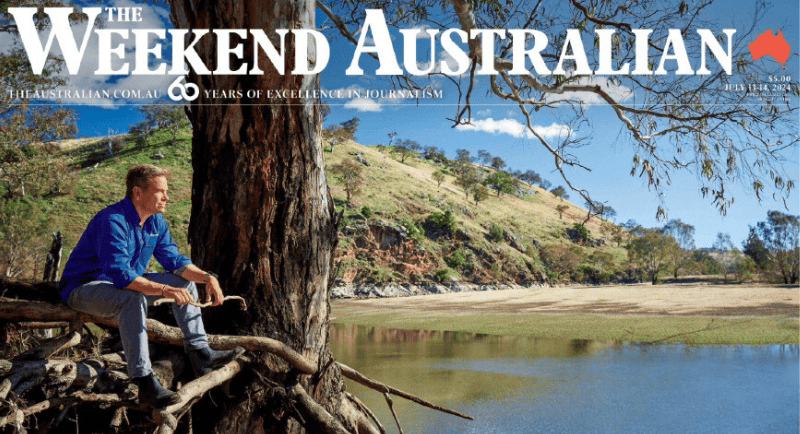
Lachlan Murdoch on the cover of The Weekend Australian on Saturday
